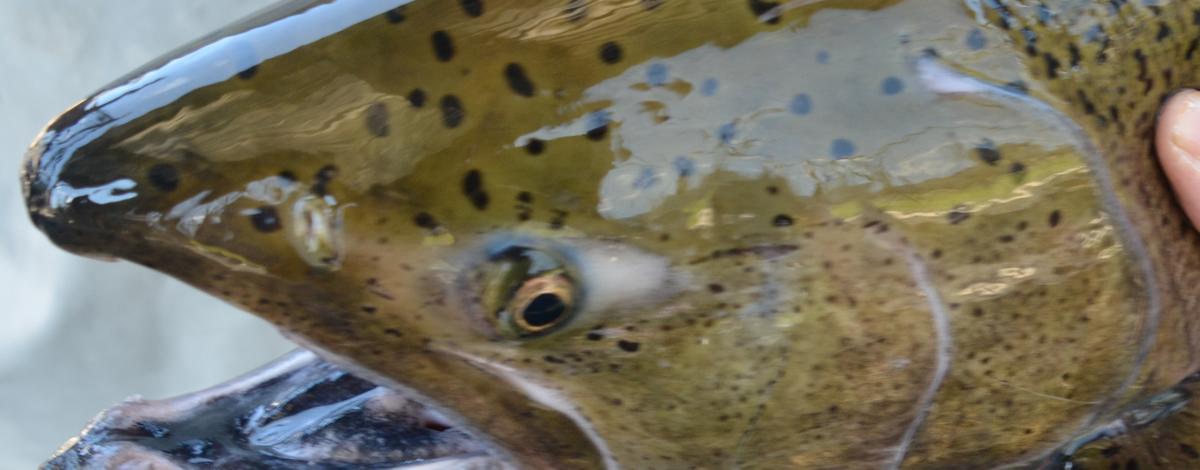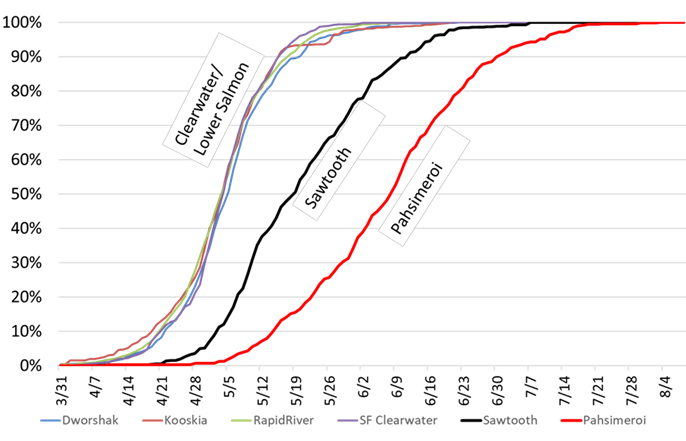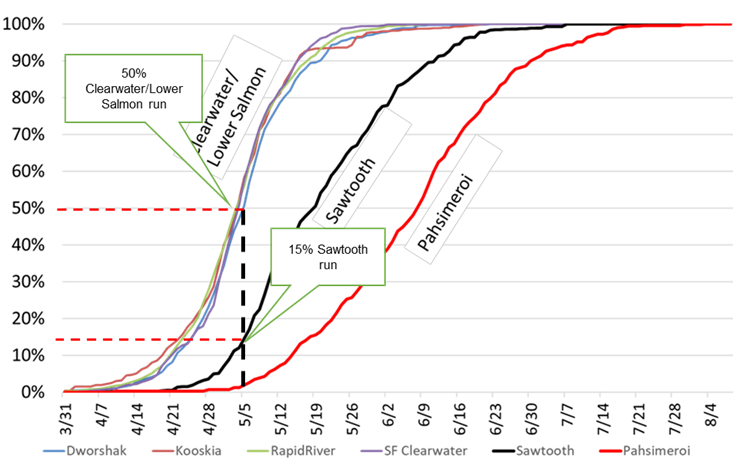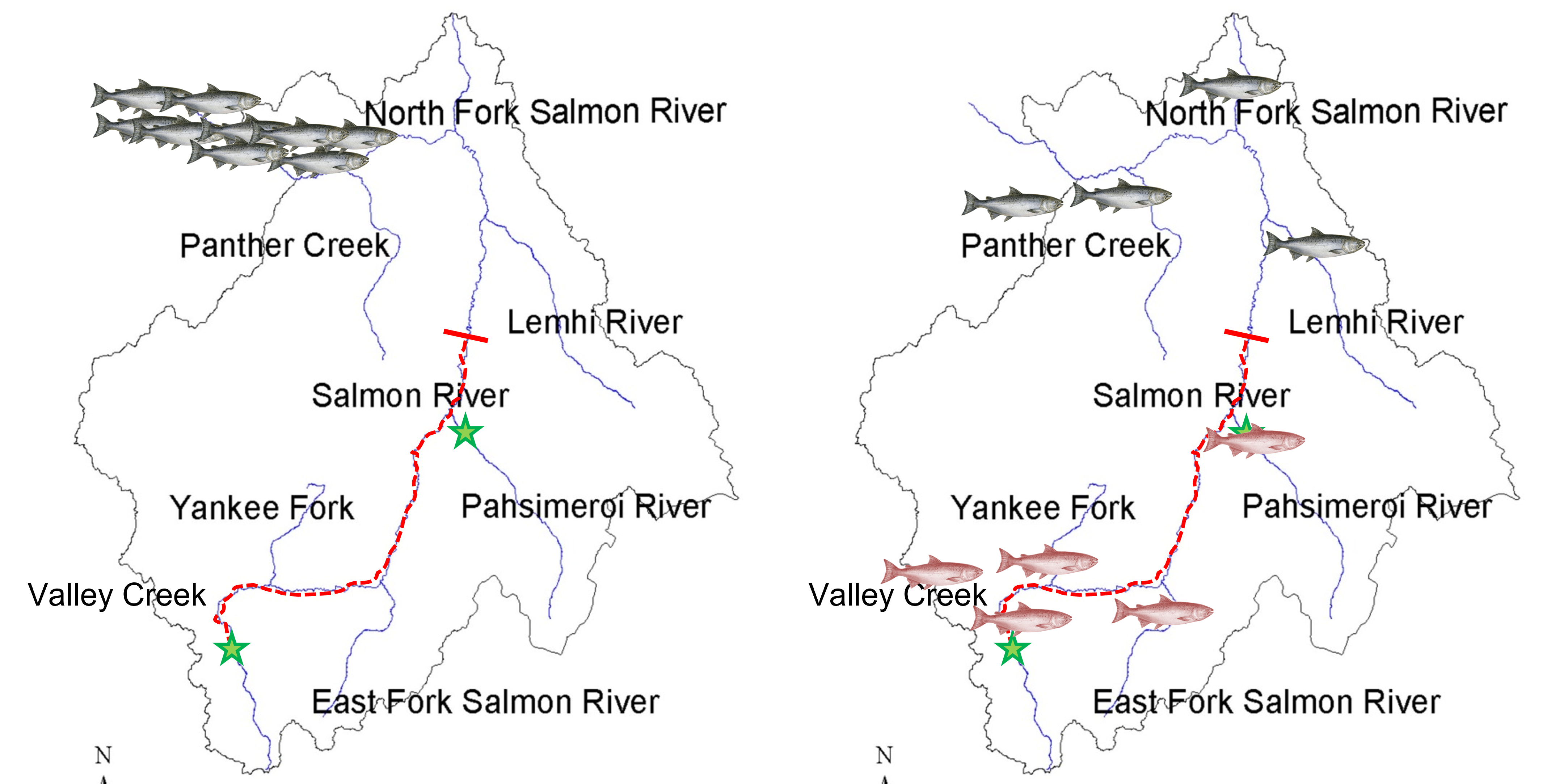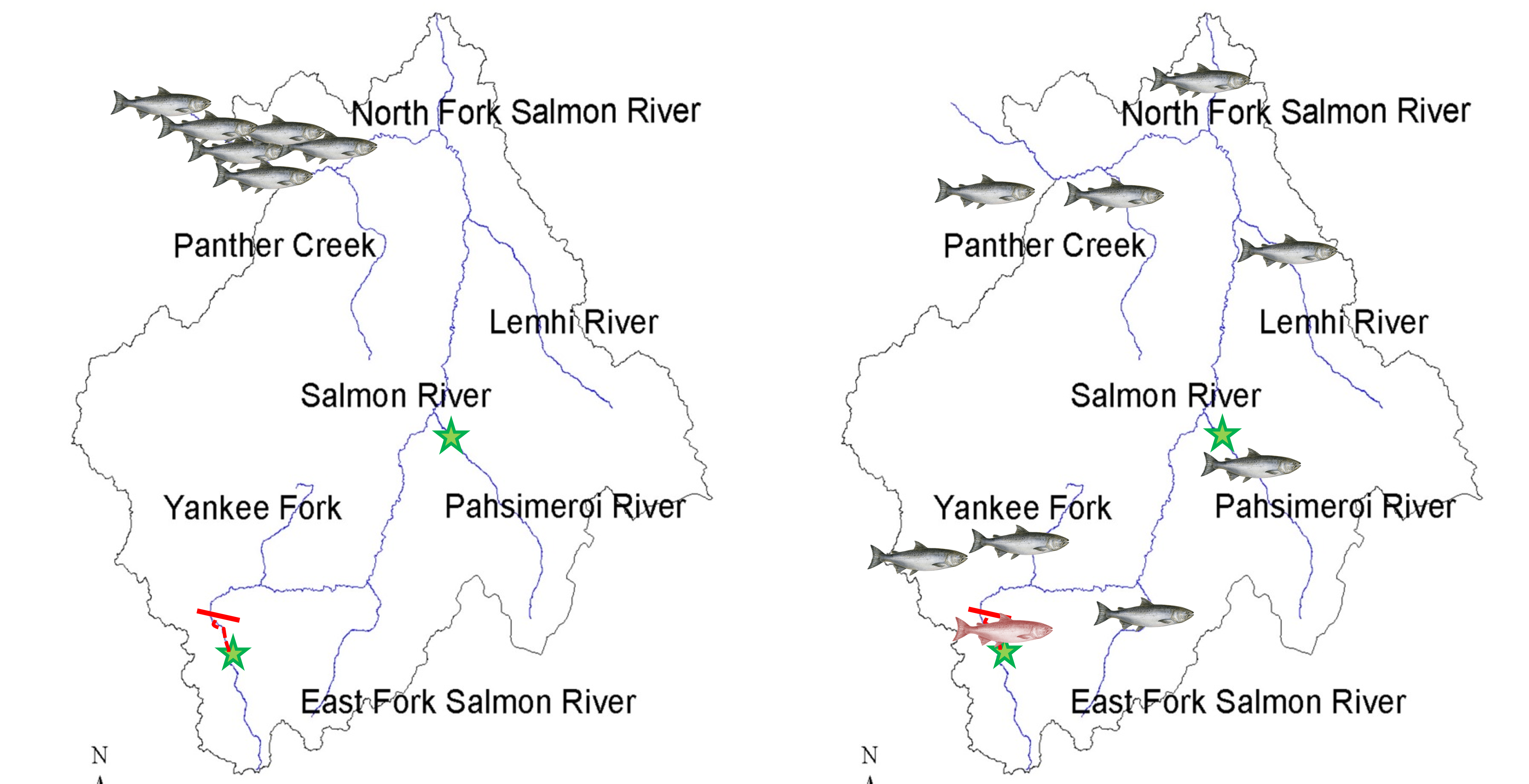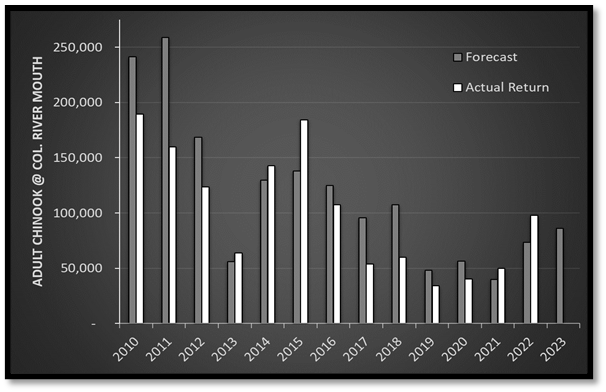As ice conditions deteriorate and weather starts to warm up, late winter and early spring seem to bring on the itch for open water fishing for all of us. While steelhead fishing is about to turn on in the upper Salmon River, a big part of this anticipation is for the upcoming spring and summer Chinook seasons. We get lots of calls and questions this time of year about the potential for fisheries in the upper Salmon River, especially as folks down river start discussing fisheries in the Clearwater and Little Salmon. Many of you have reached out to me with questions about the recent meetings regarding the lower river fisheries, what this means for upper Salmon River fisheries, and how you can get more info. Below is a primer on Chinook returns to the upper Salmon River, the season setting process, and what influences our ability to have fisheries.
Chinook returns (and fisheries) in Idaho are variable throughout the spring and early summer. We have different stocks of fish returning to different hatcheries, and while these stocks overlap to some extent during their migration, there is some separation in run timing. Below is a graph that shows the migration timing of adult Chinook salmon crossing Bonneville Dam for several of the Idaho hatchery groups. The graph shows the percent of that total hatchery return crossing over Bonneville Dam by date. I’ve lumped the Clearwater/Lower Salmon stocks (which includes spring Chinook returns to Dworshak, Kooskia, Clearwater, and Rapid River hatcheries) and compared them to the timing of Sawtooth and Pahsimeroi hatchery stocks which have a more summer-type run timing.

